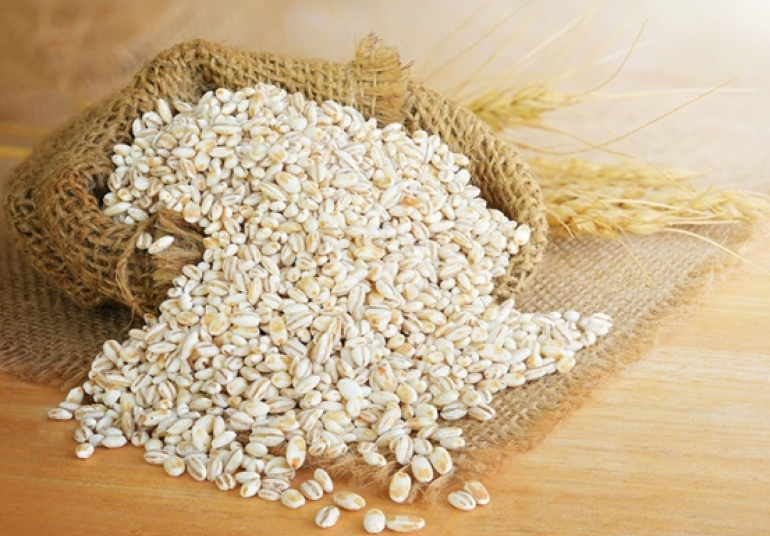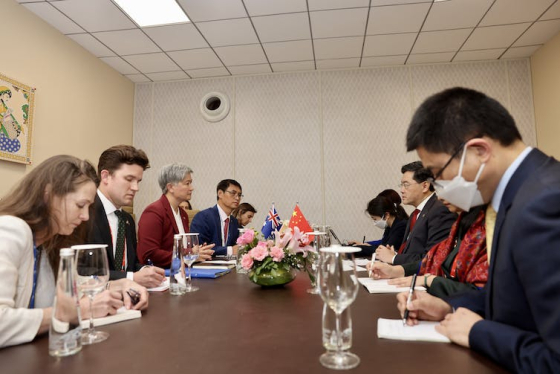18 April 2023
By Associate Professor Weihuan Zhou and Professor James Laurenceson.
The agreement between Australia and China to resolve a dispute over Chinese tariffs on Australian barley without World Trade Organization (WTO) adjudication is evidence of a distinct improvement in relations.
It raises confidence Australia can maintain a constructive relationship with China even as US-China relations continue to deteriorate.
China imposed an 80.5% import tariff on Australian barley in May 2020, on the grounds Australian barley was sold in the Chinese market at a price lower than its price in Australia (known as “dumping”) and was subsidised, harming China’s barley growers.
China’s Ministry of Commerce began an anti-dumping and anti-subsidy investigation into barley in November 2018. At the time it was perceived as retaliation for more than a dozen anti-dumping actions taken by Australia against Chinese imports over a decade.
But the timing of the tariff decision, just weeks after Australia called for an international investigation into the origin of COVID-19, meant it was perceived as part of a broader campaign of Chinese economic coercion that included actions against Australian coal, beef, lobster and wine.
In December 2020, Australia lodged its claim against the barley tariffs with the WTO. The breakdown in the official relationship at the time made it impossible for the dispute to be resolved via consultation.
Last week (on April 11) both parties requested the WTO suspend proceedings. This follows nearly a year of efforts to repair the relationship following the election of the Albanese government.
The agreement came in the same week that Australia hosted China’s deputy foreign minister, Ma Zhaoxu, the highest-level Chinese official to visit Canberra in more than six years.
Official visits by China’s Foreign Minister, Qin Gang (who met Australia’s Foreign Minister Penny Wong in March on the sidelines of a G20 meeting in New Delhi) and senior officials from other ministries like agriculture and education, are expected to follow.
What the barley agreement means
Digging into the details of the barley deal, China has agreed to conduct an expedited review of barley tariffs in the next three or four months.
China’s Ministry of Commerce initiated a review on April 14, based on an application lodged by the China Alcoholic Drinks Association. The review is needed for the ministry to find a reasonable ground to remove the duties. The standard time frame for such a review is 12 months.
For Australia, this offers a quicker path to get barley back in the Chinese market than proceeding with the WTO case.
While a decision from the WTO panel hearing the dispute was expected in just days, a finding that Australia wasn’t dumping barley on China could have meant another year before the tariffs were terminated. This is because China would retain the option of appealing the decision. Even if it then lost the appeal, it could still have dragged out removing the tariffs.
The approach sets a useful template for how Australia might similarly get China to remove the tariffs (of 116% to 218%) imposed on Australian wine in March 2021.
Australia initiated WTO proceeding in June 2021, with the WTO panel established four months later. It is expected to issue its decision by mid-2023. But continuing with the process will also take much longer for the tariffs to be removed.
This approach can also potentially be a template for the parties to suspend WTO dispute proceedings brought by China against Australia for its anti-dumping and anti-subsidy tariffs on selected Chinese imports.
Knocking on the Trans-Pacific Partnership’s door
For China, a more strategic goal behind the agreement might be alleviating Australia’s resistance to China joining the Comprehensive and Progressive Agreement for Trans-Pacific Partnership (CPTPP).
The trade pact involves 11 Pacific-rim nations and now Britain, whose request to join was approved by the other signatories in March.
China lodged its application to join after the UK, in September 2021. It too needs consensus approval from all CPTPP parties, and Australia has made its position crystal clear: China must end its trade sanctions and show a capability and willingness to live up to the CPTPP’s high standards.
Resolving the barley dispute is a starting point. It will also demonstrate that a rules-based global trading system can influence China’s behaviour. That’s not unexpected, because no country has a bigger stake in global trade. Last year China’s goods trade reached $US6.3 trillion, nearly $US900 billion more than the US.
For Australia, beginning a discussion about China joining the CPTPP may speed up regaining market access for its exports, and be an opportunity to secure China’s commitment to a rules-based agreement that exceeds WTO minimums.
From cautious optimism to reasonable confidence
The anticipated resolution of the barley dispute is not an isolated achievement. It demonstrates the effectiveness of the Albanese government’s diplomatic approach to China.
This has involved incrementally rebuilding economic cooperation while managing disagreements on values and security issues through calm and professional engagement. Amid geopolitical tensions with the US, China is also looking to stabilise its external environment.
Economic cooperation remains a standout area of common interest. Add in political willingness and diplomatic wisdom, and an assessment of cautious optimism can be replaced by one of reasonable confidence in the upward trajectory of the bilateral relationship.
Associate Professor Weihuan Zhou’s research may be found at SSRN, Twitter @WeihuanZhou, and LinkedIn.
James Laurenceson is Director and Professor, Australia-China Relations Institute (ACRI), University of Technology Sydney.
This article is republished from The Conversation under a Creative Commons license. Read the original article.

